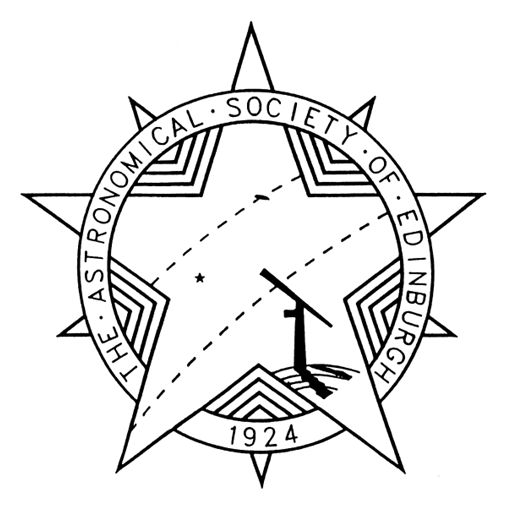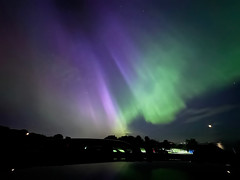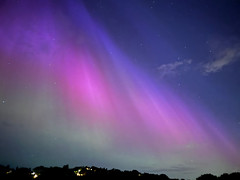Monthly Archives: November 2018
Scotland’s Sky in December, 2018
Comet sweeps near Earth as meteors streak from Gemini

The maps show the sky at 21:00 GMT on the 1st, 20:00 on the 16th and 19:00 on the 31st. Also indicated are the motions of both Mars and Comet Wirtanen. (Click on map to enlarge)
December brings our longest and perhaps most interesting nights of the year. The two stand-out planets are Mars in the evening and Venus before dawn, the latter now as brilliant as it ever gets and the source of a flurry of recent UFO reports. We may also enjoy the rich and reliable Geminids meteor shower and Comet Wirtanen looks set to be the brightest comet of the year.
The comet’s progress is plotted on our charts, beginning low in the south near the Cetus-Eridanus border on the 1st and sweeping northwards and eastwards through Taurus to Auriga and beyond. A small comet with an icy nucleus possibly less than 1 km wide, Wirtanen was discovered in 1948 and orbits the Sun every 5.4 years between the Earth and Jupiter. It was the original destination of the European Space Agency’s Rosetta mission before delays forced the probe to target Comet Churyumov–Gerasimenko instead.
Comet Wirtanen reaches perihelion, its closest to the Sun and just beyond the Earth’s orbit, on the 12th. It is nearest the Earth on the 16th, passing only 11.6 million km away in the tenth closest approach of any observed comet since 1950. On that evening it lies 4° east (left) of the Pleiades and may appear as a large fuzzy ball lacking any obvious tail.
Predictions of its appearance at that time vary, but I suspect that its total brightness may be around the fourth magnitude, a little brighter than the fainter stars plotted on our charts. While this would normally put it well within naked-eye range, the fact that it is so close to the Earth is likely to mean that its light is spread out over an area even wider than the Pleiades. Unless we have a good dark sky, we may struggle to see its extended glow, and it is a pity that the gibbous Moon (63% sunlit) will also hinder observations before midnight. Only a week later, on the evening of the 23rd, it lies only 1° east-south-east of the bright star Capella but will be fading in still brighter moonlight.
The Sun reaches its most southerly point at the winter solstice at 22:23 GMT on the 21st as sunrise/sunset times for Edinburgh change from 08:19/15:44 GMT on the 1st to 08:42/15:40 on the 21st and 08:44/15:48 on the 31st. The Moon is new on the 7th, at first quarter on the 15th, full on the 22nd and at last quarter on the 29th.
Our charts show Andromeda and its Galaxy high in the south as Orion stands proudly in the south-east below Taurus and the Pleiades. Castor lies above Pollux in Gemini in the east and is close to the point in the sky that marks the radiant of the Geminids meteor shower.
The Geminids always produce an abundance of slow bright meteors which streak in all parts of the sky as they diverge from the radiant. The latter climbs to pass high in the south at around 02:00 and sinks into the west before dawn. The shower is active from the 8th to the 17th with the night of 13th-14th expected to be the best as meteor rates build to a peak at around dawn. An observer under an ideal dark sky with the radiant overhead may count upwards of 100 meteors per hour making the Geminids the highest-rated of our annual showers, though most of us under inferior skies may glimpse only a fraction of these.
Mars shines brightly some 25° high in the south as night falls for Edinburgh at present and is almost 10° higher by the month’s end after moving east-north-eastwards from Aquarius into Pisces. Our maps have it sinking in the south-west on its way to setting in the west before midnight. Although the brightest object in its part of the sky, it dims from magnitude 0.0 to 0.5 as it recedes from 151 million to 189 million km. When Mars stands above the Moon on the 14th, a telescope shows its ochre disk to be only 8 arcseconds across.
Saturn, magnitude 0.6, hangs just above our south-western horizon at nightfall as December begins but is soon lost in the twilight. Our other two evening planets, Uranus and Neptune, are visible through binoculars at magnitudes of 5.7 and 7.9 in Pisces and Aquarius respectively. Mars acts as an excellent guide on the evening of the 7th when Neptune stands about one quarter of a Moon’s breadth below-right of Mars.
Venus, now at its best as a dazzling morning star, rises in the east-south-east four hours before the Sun and climbs towards the south by dawn. This month it dims slightly from magnitude -4.7 to -4.5 as it tracks away from Virgo’s brightest star Spica in Virgo into the next constellation of Libra. Telescopes shows its crescent shrink from 40 to 26 arcseconds in diameter. Look for Venus below-left of the Moon on the morning of the 3rd and to the Moon’s right on the 4th.
Mercury is set to become as a morning star very low in the south-east and is soon to be joined by the even brighter Jupiter. Mercury rises more than 100 minutes before the Sun from the 5th to the 24th and stands between 5° and 9° high forty minutes before sunrise. It shines at magnitude 0.8 when it lies 7° below-left of the impressively earthlit Moon on the 5th, and triples in brightness to magnitude -0.4 by the 24th.
Jupiter, conspicuous at magnitude -1.8, emerges from the twilight and moves from 9° below-left of Mercury on the 11th to pass 0.9° south of Mercury on the 21st.
Diary for 2018 December
3rd 19h Moon 4° N of Venus
5th 21h Moon 1.9° N of Mercury
7th 07h New moon
7th 15h Mars 0.04° N of Neptune
9th 06h Moon 1.1° N of Saturn
12th 23h Comet Wirtanen closest to Sun (158m km)
14th 08h Peak of Geminids meteor shower
14th 23h Moon 4° S of Mars
15th 11h Mercury furthest W of Sun (21°)
15th 12h First quarter
16th 13h Comet Wirtanen closest to Earth (11.6m km) and 3.6° SE of Pleiades
20th 02h Jupiter 5° N of Antares
21st 08h Moon 1.7° N of Aldebaran
21st 15h Mercury 0.9° N of Jupiter
21st 22:23 Winter solstice
22nd 18h Full moon
23rd 18h Comet Wirtanen 0.9° SE of Capella
25th 05h Moon 0.3° S of Praesepe in Cancer
29th 10h Last quarter
Alan Pickup



